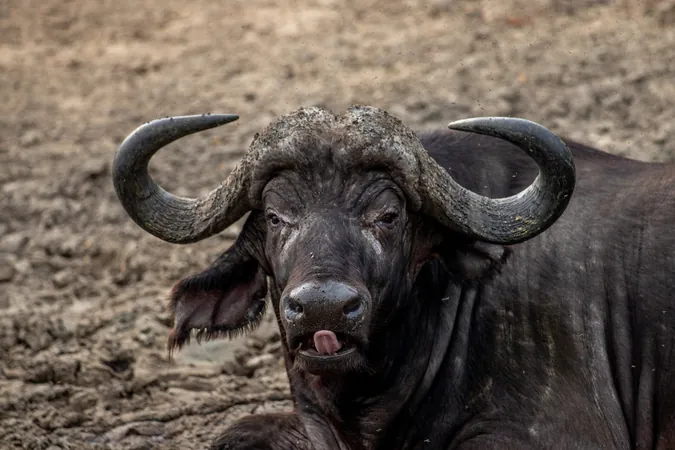
Shock in Germany: First Cases of Foot-and-Mouth Disease in Water Buffalo Since 1988!
2025-01-10
Author: Nur
Germany's Startling Development
Germany has recently witnessed a startling development—three cases of foot-and-mouth disease reported in water buffalo on a farm near Berlin. This marks the first incidence of this highly contagious livestock disease in Germany since 1988, sending shockwaves through the agricultural community.
Understanding Foot-and-Mouth Disease (FMD)
Foot-and-mouth disease (FMD) is a viral infection that, while not harmful to humans, poses a significant threat to cloven-hoofed animals, including cattle, sheep, and pigs. The symptoms to watch for include high fever and painful blisters around the mouth and hooves, which can severely affect the animals' health and productivity.
Confirmation and Culling Measures
The infections were confirmed in the eastern state of Brandenburg, which encircles Berlin, by the national government's Institute for Animal Health. According to a spokesperson from the state, Bild newspaper reported that the three infected water buffalo have sadly died, prompting authorities to make the difficult decision to cull the remaining herd of 11 water buffalo to contain the outbreak.
Government Response and Exclusion Zones
Michael Hauck, a spokesperson from the German food and agriculture ministry, emphasized the seriousness of the situation, noting that this outbreak resulted in the establishment of exclusion zones extending three kilometers (approximately two miles) around the infected area, with surveillance zones stretching as far as 10 kilometers. Such preventative measures aim to control the spread of the disease, which previously resulted in severe culling in earlier outbreaks across Europe. For instance, in the UK after an epidemic in 2007, over 2,000 animals were culled to stem the infection, while Bulgaria faced similar actions in 2011.
The Role of Water Buffalo in Agriculture
Water buffalo, which have been present in Germany since the 1990s, serve vital roles in local agriculture—farmed for their milk and meat while also playing an ecological role in controlling grass growth on fields. Authorities are urging farmers to remain vigilant and report any abnormal symptoms among their livestock to prevent further outbreaks.
Looking Ahead: Challenges for the Agricultural Sector
As the agricultural sector braces for potential challenges ahead, this incident serves as a stark reminder of the vulnerabilities within livestock management and the importance of disease surveillance to ensure the welfare of animals and the stability of food supply chains across Europe. Stay tuned for updates as the situation unfolds!



 Brasil (PT)
Brasil (PT)
 Canada (EN)
Canada (EN)
 Chile (ES)
Chile (ES)
 Česko (CS)
Česko (CS)
 대한민국 (KO)
대한민국 (KO)
 España (ES)
España (ES)
 France (FR)
France (FR)
 Hong Kong (EN)
Hong Kong (EN)
 Italia (IT)
Italia (IT)
 日本 (JA)
日本 (JA)
 Magyarország (HU)
Magyarország (HU)
 Norge (NO)
Norge (NO)
 Polska (PL)
Polska (PL)
 Schweiz (DE)
Schweiz (DE)
 Singapore (EN)
Singapore (EN)
 Sverige (SV)
Sverige (SV)
 Suomi (FI)
Suomi (FI)
 Türkiye (TR)
Türkiye (TR)
 الإمارات العربية المتحدة (AR)
الإمارات العربية المتحدة (AR)